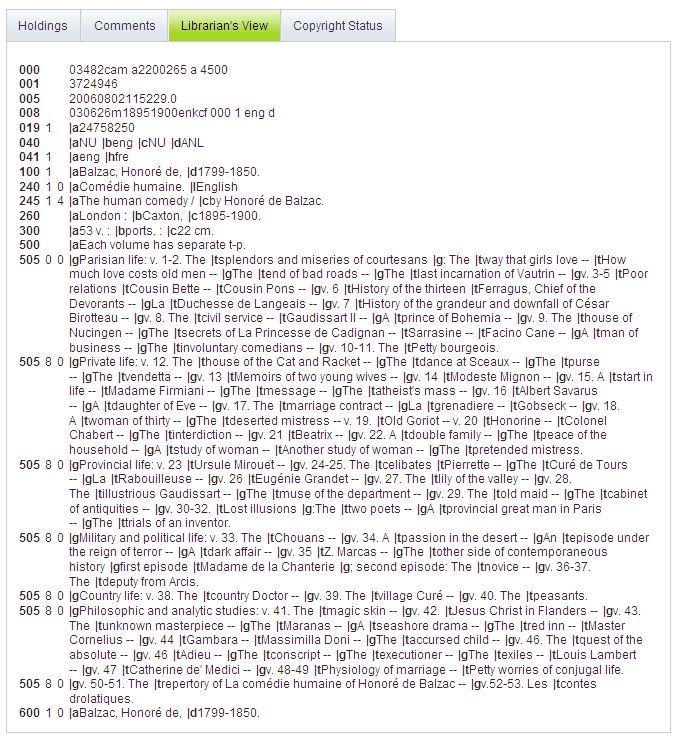Module 2: The TEI Header
4. The Header of a Complex Text #
Before we end, let’s go back to where we left you: the library, in front of the library catalogue or computer screen. Prepared for the possibility that this copy of the book may be in loan, you find another reference to The Wild Ass’s Skin in the record of La Comédie Humaine (look for “505 8 0 |gPhilosophic and analytic studies: v. 41. The|tmagic skin”; The Magic Skin is an alternative title for the English translation):

Now that’s a record! If you thought the truckload of possibilities for the description of electronic texts in the TEI header set your head spinning already, imagine what an electronic edition of La Comédie Humaine might look like! Code 300 tells us that it has no less than 53 volumes, with different titles per volume.
One way of encoding this majestic work as a whole would be to treat La Comédie Humaine as a kind of “supertext” containing all different works. This can be done in TEI by treating the whole as a <teiCorpus>, containing each separate work in its own <TEI> text. As each of these <TEI> texts needs its own TEI header, you can imagine the amount of meta-information, much of which will have to be repeated. This can be avoided by placing the common meta-information in the <teiHeader> element of the <teiCorpus> element, while retaining all work-specific meta-information in the TEI header section of the respective <TEI> text. This mechanism allows you to be maximally expressive in the description of all texts in a TEI corpus, and maximally efficient in the reduction of common information in the individual TEI headers.
The following example gives an impression of what a TEI header for an electronic edition of La Comédie Humaine might look like:


